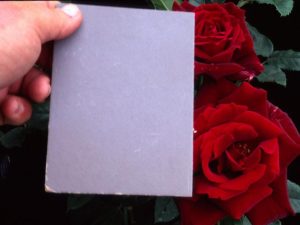Uncategorized
How To Photograph Red Roses
Let’s Get Serious with Our Photos:
A Picture is Worth a Thousand Words
by Rebecca Weersing
Our 2013 and 2014 Rose Shows included a photography section which was very warmly received. Sometimes that perfect rose won’t wait for the Rose Show but it will wait while you run to grab your camera.
Below is an article on photographing red roses that I hope you will find useful. We all still have time to practice taking photos of our fall blooms.
From April to November (minus July and August) we enjoy our ‘Little Rose Show’ at our monthly meetings. The Programs Committee is planning to add a ‘Little Rose Photo Show’ for January, February and March.
New rules will follow but will be similar to the Rose Show rules. Practice makes perfect, so take time to experiment with those shots at different times of day as often as possible. Now, let’s get clicking!
The Secret to Photographing Red Roses
This month’s newsletter contributor is Rich Baer. He has a Masters Degree in Plant Physiology and started photographing roses and other garden-related items in 1990. He has taken more than 80,000 rose photos, with many of them published in the American Rose Society Magazine, ARS calendars, and other gardening publications. Rich has also won multiple awards.
I have been observing photo graphy ever since I could look at pictures. I always loved pictures of beautiful flowers and I have also grown roses since I was about six years old.
During that time, I gained an appreciation for the beauty of roses and have always enjoyed seeing that beauty portrayed in photography.
A number of roses in my garden were planted because I saw a beautiful picture of that rose in publication.
Unfortunately, I often see photos that don’t accurately capture a rose’s true color. This is particularly true for red roses which are quite tricky to shoot. They often turn out as a medium-pink rose.
Someone who doesn’t know a particular rose will likely believe the picture they see instead of the description that says it’s a “beautiful dark red” rose.
Why is it that so many opportunities to show us the beauty of a particular rose are squandered?
The problem begins with photographers trusting their equipment. Cameras come equipped with built‑in light meters. The light meter suggests what exposure should be selected for any given scene.
The majority of cameras are designed to take good pictures of people.
As a result, light meters are calibrated to read a 15% reflectance which is the amount of incident light that is reflected from the average Caucasian skin. Anything that reflects a much greater or less percent of light will be incorrectly exposed if you rely on the built-in light meters.
Dark red roses reflect much less than 15% of the light impinging upon them, but the camera does not know what it is being pointed at. It reacts to the amount of light it senses and gives you an incorrect exposure, one that grossly overexposes the rose.
When you follow the directions given by the camera, your final exposure may be two to three stops overexposed, producing a pink color instead of a beautiful dark red.
The solution to this problem is actually very simple. You have to fool the light meter into giving you the right information so that the picture will come out correctly. This can be done by using a gray card.
A gray card is usually sold as an 8.5 x 11 piece of material that is designed to reflect light at the 15% reflectance level. (I cut mine into small squares that can be used more easily than the whole piece.) They are available in most photo shops or online for less than $5.00

To use it, compose your shot as you normally would, but before you make the exposure, place the gray card in front of the flower to be photographed and note what the exposure your camera suggests while reading the light being reflected off the gray card.
The card should be positioned so that the light reflects from the light source, off the gray card and into the lens of the camera. Then you remove the gray card and manually keep the exposure that was suggested when reading the light off the gray card.
If your camera suggests an exposure of 1/15 of a second with an f‑stop of 20 when looking at the flower directly, the gray card may give you a suggested exposure of 1/30, 1/60 or even 1/120 of a second while using the same f‑stop. This is one, two or three stops underexposed according to the original light meter reading, but that turns out to be the necessary exposure to get the color right for dark red roses.
Copyright © 2018-present Heirloomroses. All Rights Reserved.